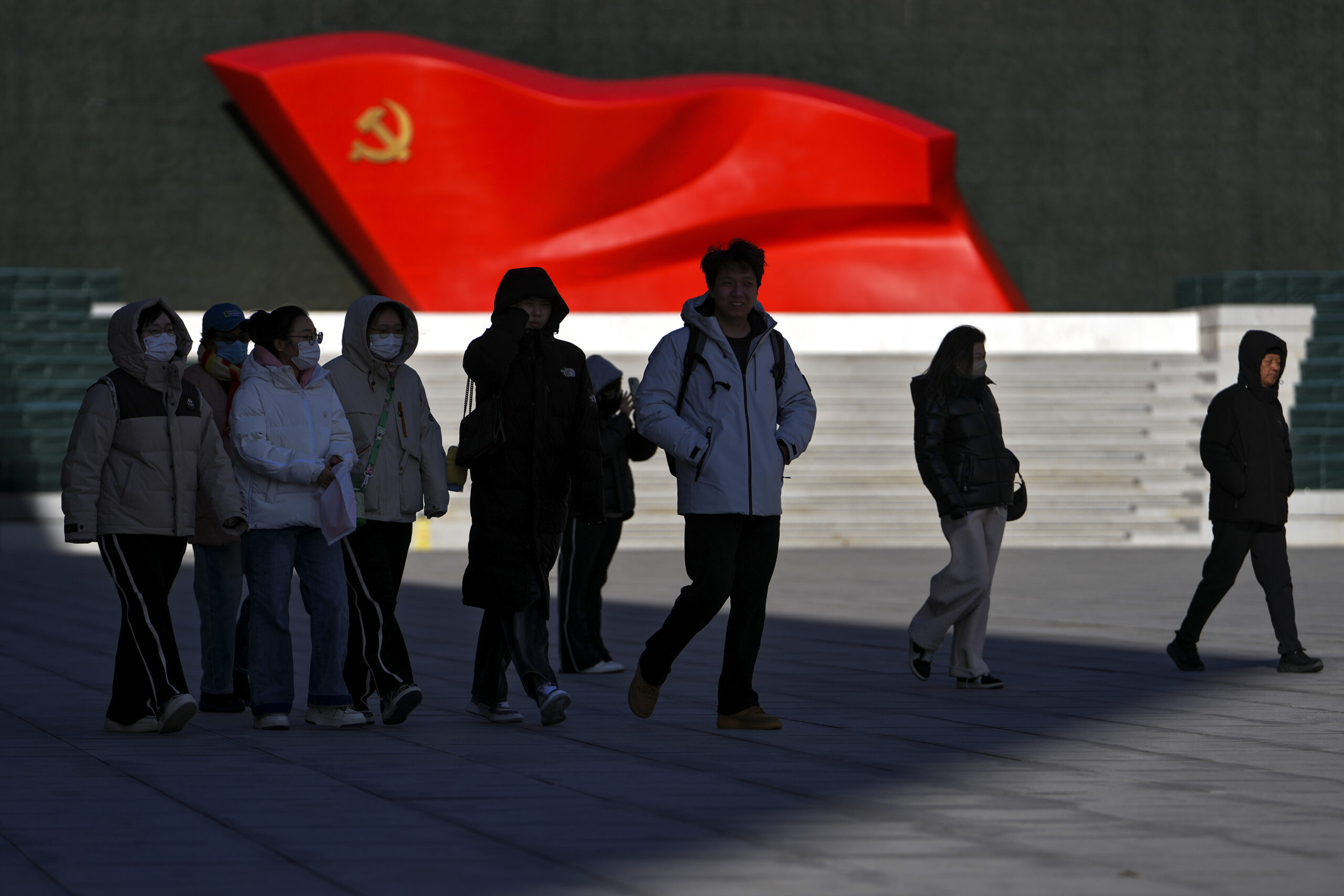China's Population Faces Ongoing Decline Amid Efforts to Boost Birth Rates
China's population fell for the third consecutive year in 2024, despite slight increases in birth rates due to ongoing demographic challenges.

Despite various pro-natal policies and a slight uptick in births, China's ongoing population decline underscores the deep-rooted issues plaguing its demographic landscape, ultimately threatening the stability of its economy and social fabric.
China plunges deeper into unprecedented population crisis
 Newsweek·4M·Mostly ReliableThis source is generally reliable but sometimes includes opinion, propaganda, or minor inaccuracies.CenterThis outlet is balanced or reflects centrist views.
Newsweek·4M·Mostly ReliableThis source is generally reliable but sometimes includes opinion, propaganda, or minor inaccuracies.CenterThis outlet is balanced or reflects centrist views.
The alarming decline in China’s population serves as a stark reminder of the failures of the communist regime, reflecting a long-term human tragedy rather than just an economic crisis.
 New York Sun·4M·Mixed ReliableThis source has a mixed track record—sometimes accurate but also prone to bias, sensationalism, or incomplete reporting.RightThis outlet favors right-wing views.
New York Sun·4M·Mixed ReliableThis source has a mixed track record—sometimes accurate but also prone to bias, sensationalism, or incomplete reporting.RightThis outlet favors right-wing views.
China's persistent population decline highlights the long-term consequences of its past one-child policy and the challenges posed by economic pressures that discourage families from having more children.
China’s Population Declines For Third Straight Year Amid Rising Economic Struggles
 Daily Caller·4M·Mixed ReliableThis source has a mixed track record—sometimes accurate but also prone to bias, sensationalism, or incomplete reporting.RightThis outlet favors right-wing views.
Daily Caller·4M·Mixed ReliableThis source has a mixed track record—sometimes accurate but also prone to bias, sensationalism, or incomplete reporting.RightThis outlet favors right-wing views.
China’s declining population presents serious demographic challenges, highlighting an urgent need for effective policies to address the aging populace and dwindling workforce.
China’s Population Decreases a Third Year in a Row
 TIME Magazine·4M·ReliableThis source consistently reports facts with minimal bias, demonstrating high-quality journalism and accuracy.Leans LeftThis outlet slightly leans left.
TIME Magazine·4M·ReliableThis source consistently reports facts with minimal bias, demonstrating high-quality journalism and accuracy.Leans LeftThis outlet slightly leans left.
China's ongoing population decline signals a deepening demographic crisis, driven not only by a plummeting birthrate but also by numerous economic challenges that continue to hinder substantial recovery efforts.
China’s population falls for third year in a row as birthrate declines
 Al Jazeera·4M·ReliableThis source consistently reports facts with minimal bias, demonstrating high-quality journalism and accuracy.Leans LeftThis outlet slightly leans left.
Al Jazeera·4M·ReliableThis source consistently reports facts with minimal bias, demonstrating high-quality journalism and accuracy.Leans LeftThis outlet slightly leans left.
China's demographic decline and aging population present significant challenges that could hinder its economic growth, highlighting the urgent need for effective policy reforms.
China’s population falls for a third straight year, posing challenges for its government and economy
 NBC News·4M·ReliableThis source consistently reports facts with minimal bias, demonstrating high-quality journalism and accuracy.CenterThis outlet is balanced or reflects centrist views.
NBC News·4M·ReliableThis source consistently reports facts with minimal bias, demonstrating high-quality journalism and accuracy.CenterThis outlet is balanced or reflects centrist views.As many nations grapple with the stark realities of declining birth rates and aging populations, the path forward requires a delicate balance of encouraging families to grow while also adapting societal structures to support an increasingly elderly demographic.
More countries, including China, are grappling with shrinking and aging populations
 Associated Press·4M·ReliableThis source consistently reports facts with minimal bias, demonstrating high-quality journalism and accuracy.CenterThis outlet is balanced or reflects centrist views.
Associated Press·4M·ReliableThis source consistently reports facts with minimal bias, demonstrating high-quality journalism and accuracy.CenterThis outlet is balanced or reflects centrist views.The persistent decline in birth rates across numerous countries underscores a demographic crisis that portends significant economic and social repercussions, particularly as aging populations demand increased support from shrinking workforces.
More Countries, Including China, Are Grappling with Shrinking and Aging Populations
 Newsmax·4M·Mixed ReliableThis source has a mixed track record—sometimes accurate but also prone to bias, sensationalism, or incomplete reporting.RightThis outlet favors right-wing views.
Newsmax·4M·Mixed ReliableThis source has a mixed track record—sometimes accurate but also prone to bias, sensationalism, or incomplete reporting.RightThis outlet favors right-wing views.
Summary
China's population reached 1.408 billion at the end of 2024, declining for the third year with a drop of 1.39 million. Despite an uptick in births to 9.54 million, the fertility rate remains below replacement levels. The aging population, alongside rising living costs and a declining marriage rate, continues to threaten economic stability. Government measures to encourage higher birth rates since the end of the one-child policy have not reversed the trend, raising concerns about future demographic and economic challenges.
Perspectives
No center-leaning sources available for this story.
History
- 4M